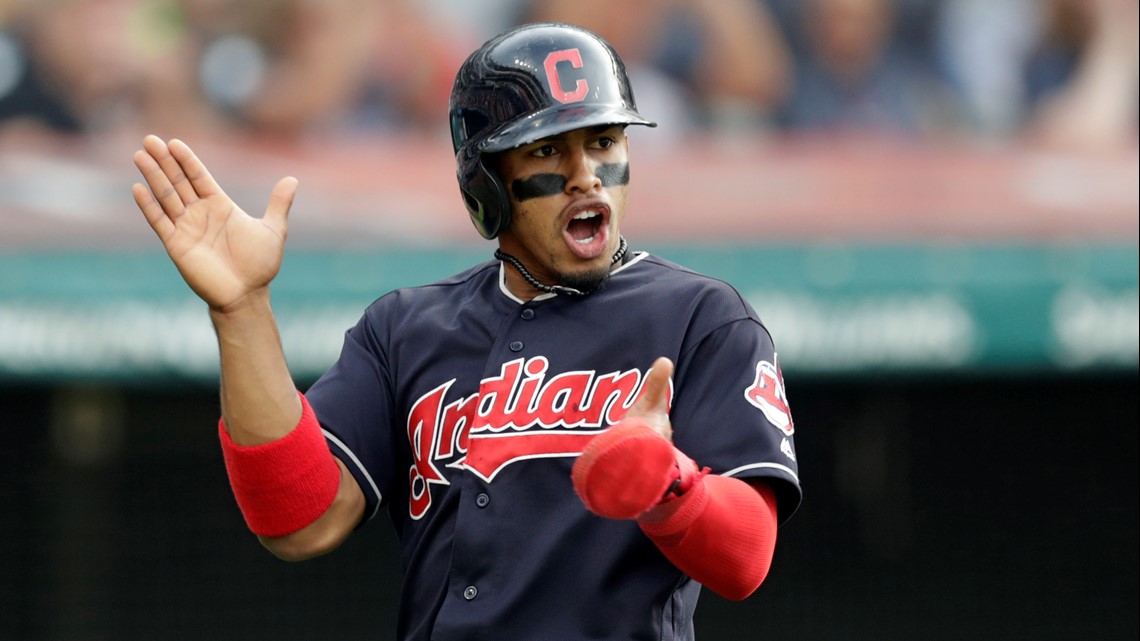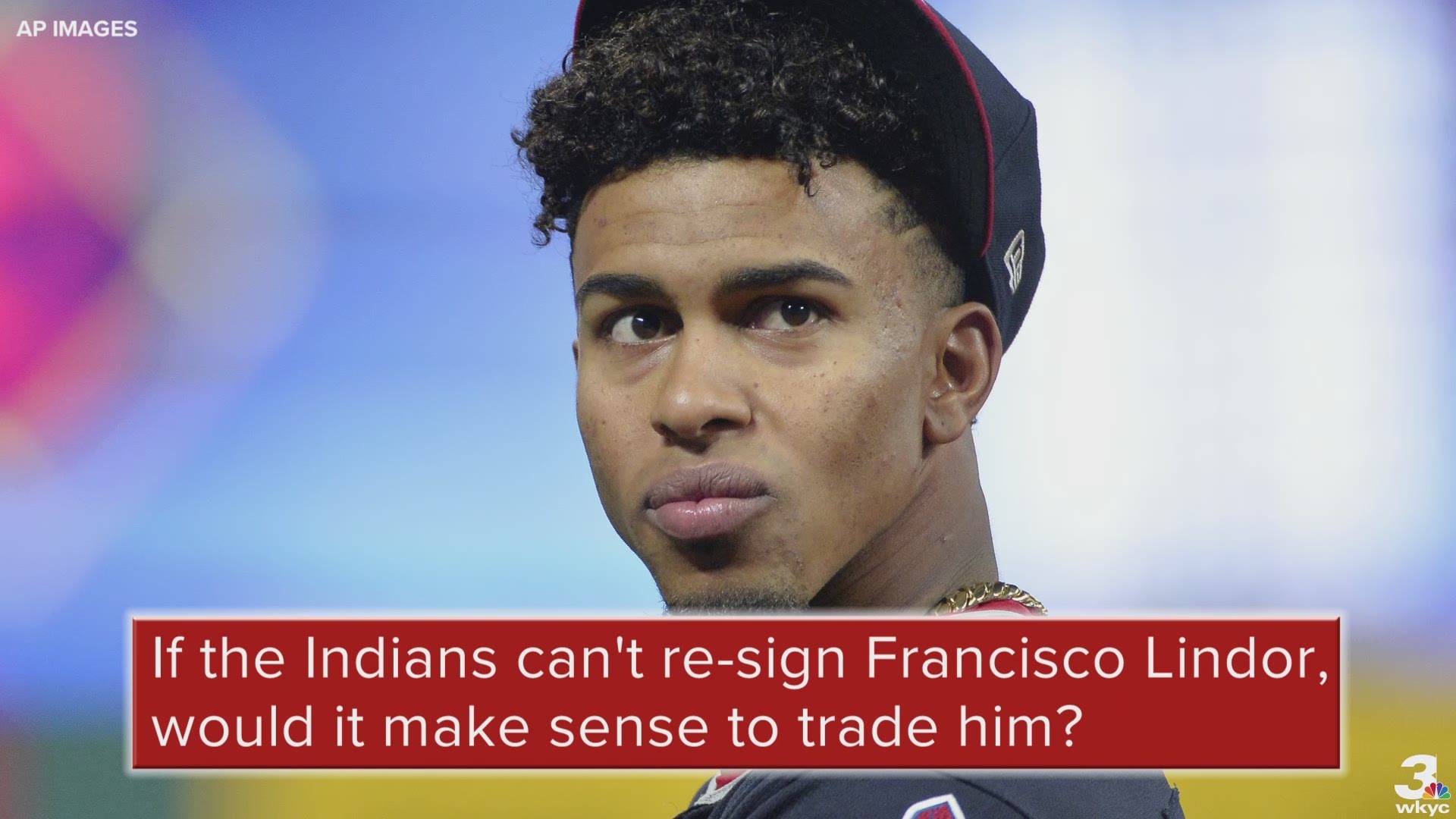CLEVELAND -- Cleveland Indians majority owner Paul Dolan made waves on Monday when he painted a bleak picture of his team's chances of re-signing Francisco Lindor when the All-Star shortstop hits free agency following the 2021 season.
“Enjoy him,” Dolan told Zack Meisel of The Athletic when asked what his message to fans regarding Lindor's future is. “We control him for three more years. Enjoy him and then we’ll see what happens.”
Dolan, who has owned the Indians since 2000, didn't outright say his team wouldn't be able to retain its franchise player. But it's also not hard to do the math in an economy where baseball's top players are commanding $300 million-plus deals on the open market.
"Probably the day when we do a deal like that is when somebody else is doing $1 billion deals with somebody else," Dolan said.
That begs the question: For just how much longer will Cleveland fans truly be able to "enjoy" watching Lindor play in an Indians uniform?


Taking Dolan at his word, the 2-time Silver Slugger will remain in Cleveland for the next three seasons, hitting free agency after the Indians' team control expires following the 2021 campaign. Perhaps at that point, Dolan and his front office will find the financial means to make a "take it or leave it" offer -- much like the Washington Nationals did in their failed attempt to retain Bryce Harper this past year.
But whereas the Nationals appeared to be holding out hope they'd be able to keep Harper until he signed a 13-year, $330 million deal with the Philadelphia Phillies in February, the Indians appear to be taking a much more realistic approach to Lindor's future free agency.
While Dolan's words may not have sat well with his fanbase, the reality of baseball is it's difficult -- and sometimes impossible -- for small market teams to keep their stars. And if the Indians already know that, might it make sense for them to fast track Lindor's exit?
It'd be hard to think of a bigger P.R. hit the Indians could take than trading Lindor, a 25-year-old 3-time All-Star who has already established himself as one of the best young players in baseball. And while losing him to a higher bidder might not be a much better message, there is an optical difference between losing a player in free agency and shipping him out of town yourself.
There's also a difference between losing a star player for nothing and potentially jump-starting your rebuild.


While the Indians would receive a compensatory pick should they lose Lindor in free agency, such selection would likely pale in comparison to what Cleveland could receive in a trade. For all intents and purposes, trading Lindor this season isn't a realistic option. Doing so in 2020 or 2021, however, could prove more palatable if the Indians don't believe they have a realistic shot at signing him to a long-term deal.
And although such a move would almost assuredly prove unpopular, it would hardly be unprecedented. In fact, Dolan's tenure as Indians owner has been littered with table-resetting trades.
In 2002, Cleveland traded ace pitcher Bartolo Colon -- then 29-years-old -- to the Montreal Expos in exchange for Lee Stevens, Brandon Phillips, Grady Sizemore and Cliff Lee, the latter two of which proved to be future All-Stars. Six years later, the Indians sent reigning American League Cy Young Award winner and free-agent-to-be CC Sabathia (then 28) to the Milwaukee Brewers, receiving top prospect Matt LaPorta and future All-Star Michael Brantley in return.
In 2009, Cleveland traded the reigning A.L. Cy Young Award winner for the second time in as many years when it sent Lee to the Phillies. In return, the Indians received a package that included starting pitcher Carlos Carrasco, who remains a mainstay of Cleveland's rotation to this day.


To varying degrees, all three deals could be considered long-term successes for Cleveland, which unlike now, wasn't considered a contender at the time of each trade. At the very least, the deals beat the likely alternatives of losing Colon, Sabathia and Lee in free agency with nothing more than compensatory picks to show for their departures.
As for what trading an every day position player star like Lindor could net the Indians, it's too early to tell. Perhaps the most appropriate comparison at this point would be the return the Baltimore Orioles received when they traded All-Star shortstop -- and free-agent-to-be -- Manny Machado to the Los Angeles Dodgers at last year's trade deadline.
Although Machado was just months away from hitting the free agent market -- where he ultimately signed with the San Diego Padres -- Baltimore still managed to extract five minor leaguers from the Dodgers, including the club's No. 4 overall prospect in outfielder Yusniel Diaz.
It's worth noting that the Orioles were out of contention when they dealt Machado last summer, while Cleveland currently remains in pole position in the A.L. Central. Would a similar deal to help replenish their farm system be worth the P.R. -- and short-term on-field -- hit of the Indians' trading Lindor?
That's a question they'll have to answer in the next two-and-a-half years.

